
Does the thought of pruning your beloved fruit trees make your palms sweat, and leave you searching online for videos or tutorials on how to do it correctly?
Are you afraid that you will mess up the branching structure and ruin all possibilities of harvest for the next growing season?
Never fear.
Apple trees are very forgiving. Start with that thought in mind, and there is no way you can give your apple tree a bad hair cut – nothing it won’t grow out of anyway!
When to prune apple and pear trees
As soon as nighttime temperatures drop significantly and frosts await you most mornings, and the tree is visibly dormant, you can safely assume that your apple or pear tree is ready for trimming.
Plum trees, on the other hand, will have to wait again until next year for their chance for branches to be thinned.
Whereas summer pruning of apple trees will stimulate flowering and fruiting, winter pruning is critical for controlling shape (focusing on crossing branches) and overall strength.
And, apple trees like to send out branches in all sorts of directions, so they do take a little bit of taming from time to time. That is, unless you leave them au naturel – in which case they can become very branchy and dense, which prevents the most delicious of fruits from forming.
To sit under an old apple tree is very romantic, but you better bring fruit from another tree if you wish to enjoy a picnic!
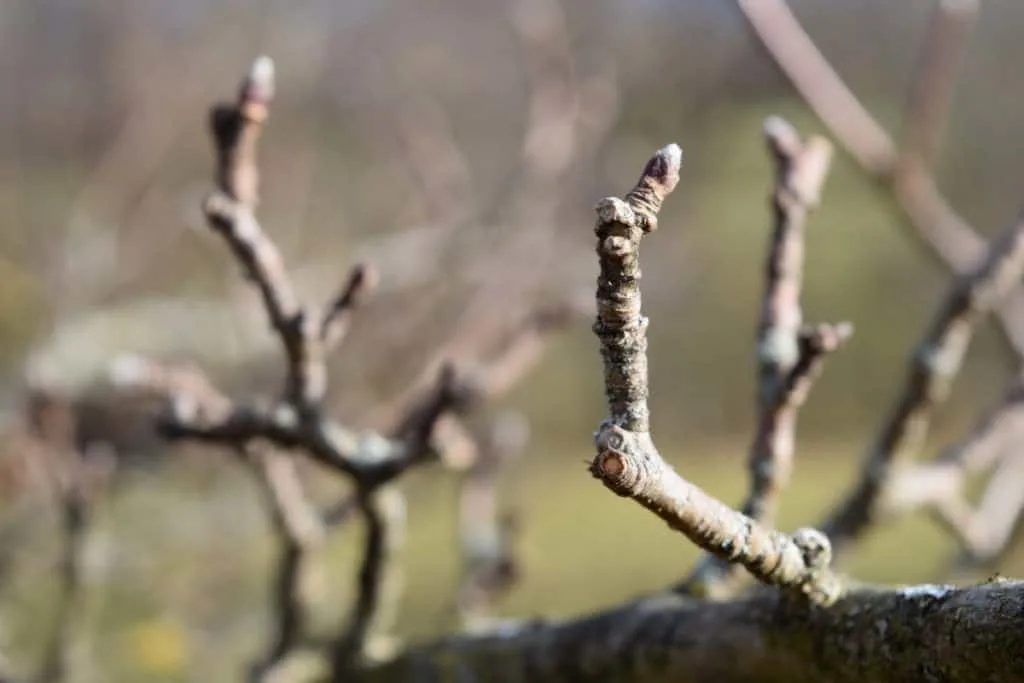
Wait until the tree is dormant, when most leaves have fallen off, and you are well on your way to winter, for at this point temperatures do not matter.
Though it is still wise to prune any kind of trees on a non-rainy day.
Think about this for a moment…
Apple trees can live 50 years and beyond, though they often stop reproducing at that age. However, they can often survive well into their 80’s, perhaps even more.
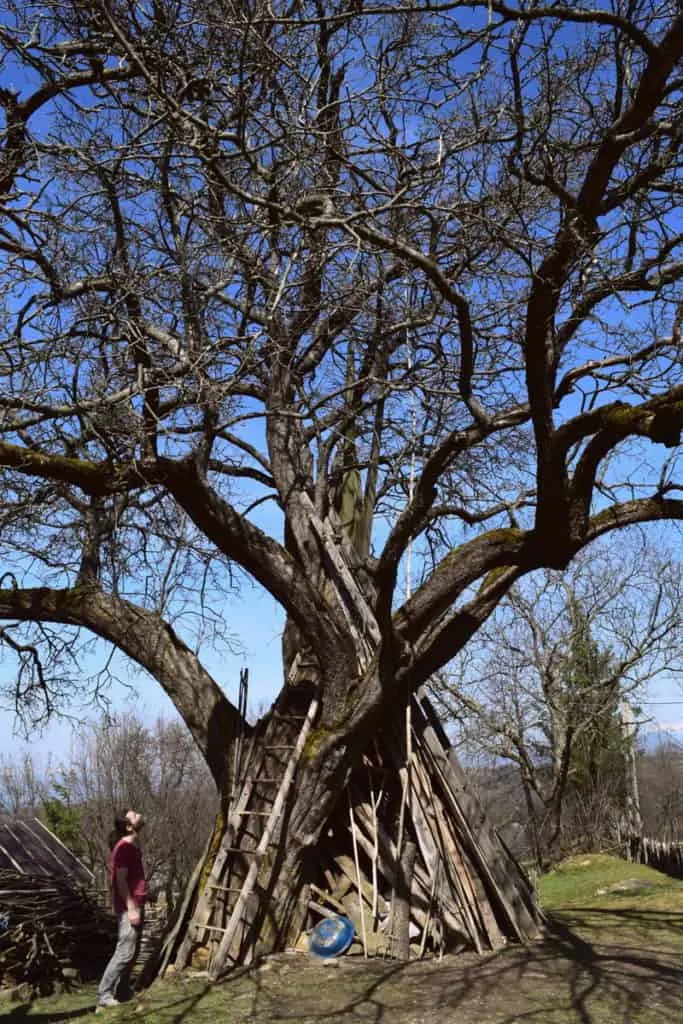
So, if you are thinking about harvesting apples for the long term, for starters, you will want to give them all the space they need as an “adult”.
Dwarf fruit trees are an excellent choice where space is limited, as they grow about 8-10 feet tall and wide.
Semi-dwarf apple trees are slightly larger with an extended reach and standard, or full-size, apple trees grow to 20-25+ feet. They can branch out even wider at an elderly age.
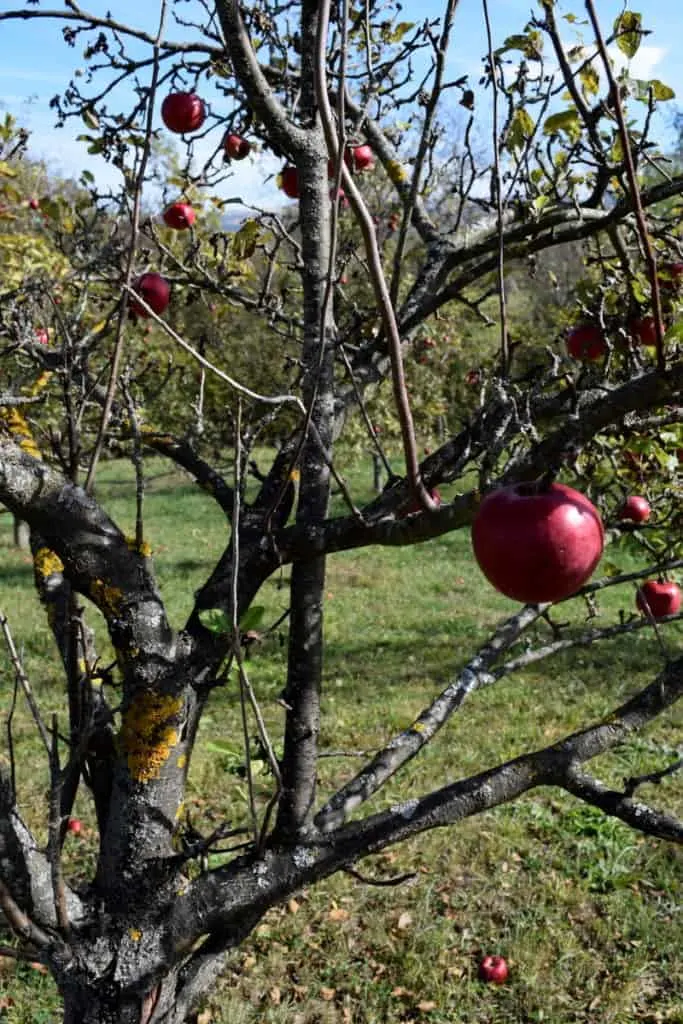
Pear trees may have a similar width, though they tend to reach upwards to 40+ feet when full-grown.
They can be ever so sweet, plus they make amazing pear sauce(!), which makes it a hard choice to leave them out of the garden or orchard.
Pruning a young apple or pear tree
You can treat apples and pears similarly, and when a fruit tree is young, less than 4 years old, go easy on it. Be mindful not to slow overall growth by removing too much at once, and give it time to express its own branching system.
All you need to prune at this stage is broken, diseased or dead branches, or rub off misplaced buds before they grow into awkward branches.
Annual pruning of a mature apple or pear tree
Once your trees really start filling in with fruit, they will require light annual pruning when they are dormant.
It is far better to stay on top of the job, than to let branches get out of hand. Pruning every 5 years will not cut it.
Get into a steady pruning routine, and it will quickly become second nature. You can then go forth and teach others how to do it!
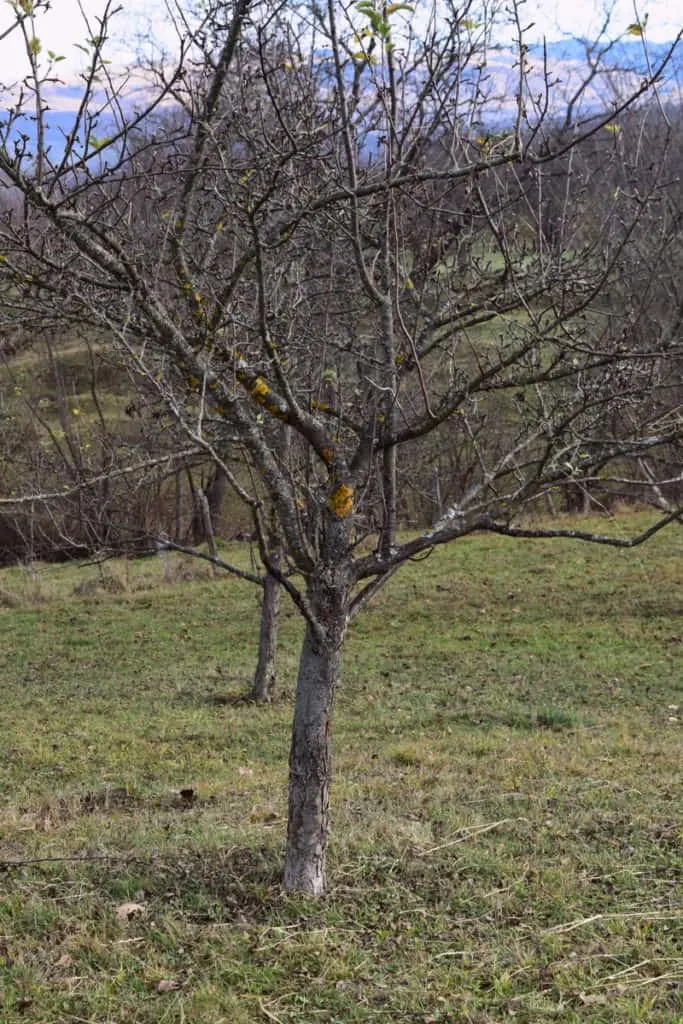
Step 1 – Remove dead, damaged or diseased branches
Look for the telltale signs.
Dried buds, dry wood, girdled bark – all of these should be removed first.
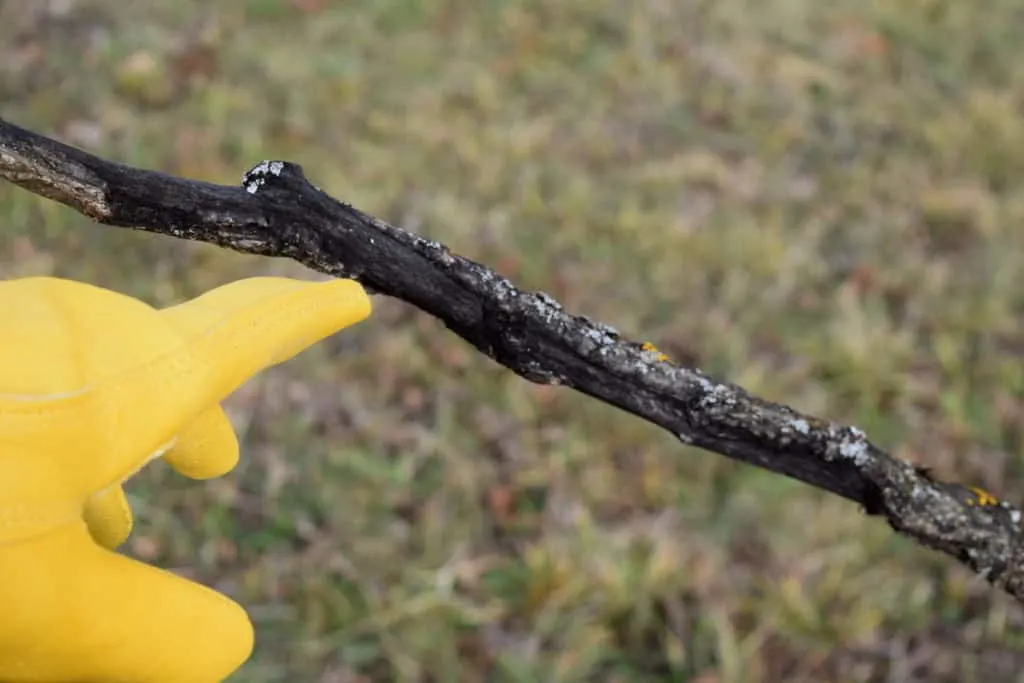
A branch that has died back will no longer be green inside. To test this, simply dig in gently with your thumbnail to determine the color, then cover it back up.
If it is brown and dry, cut it back to the nearest side branch or twig of the right orientation.
Step 2 – Step it back
At this point, take a step back from the tree and remove the overly vigorous stems, those that shoot straight to the sky. You can also remove weak branches that hang down below at strange angles.
Look closely at the trunk and determine if there are any branches too close to the ground. If so, use pruners or a handsaw and let them go.
You’ll also want to examine the branch structure and remove any crossing branches, stepping them back where necessary, either to a bud, branch or trunk.
While it may not seem like a problem at the moment, crossing branches can become one in the future.
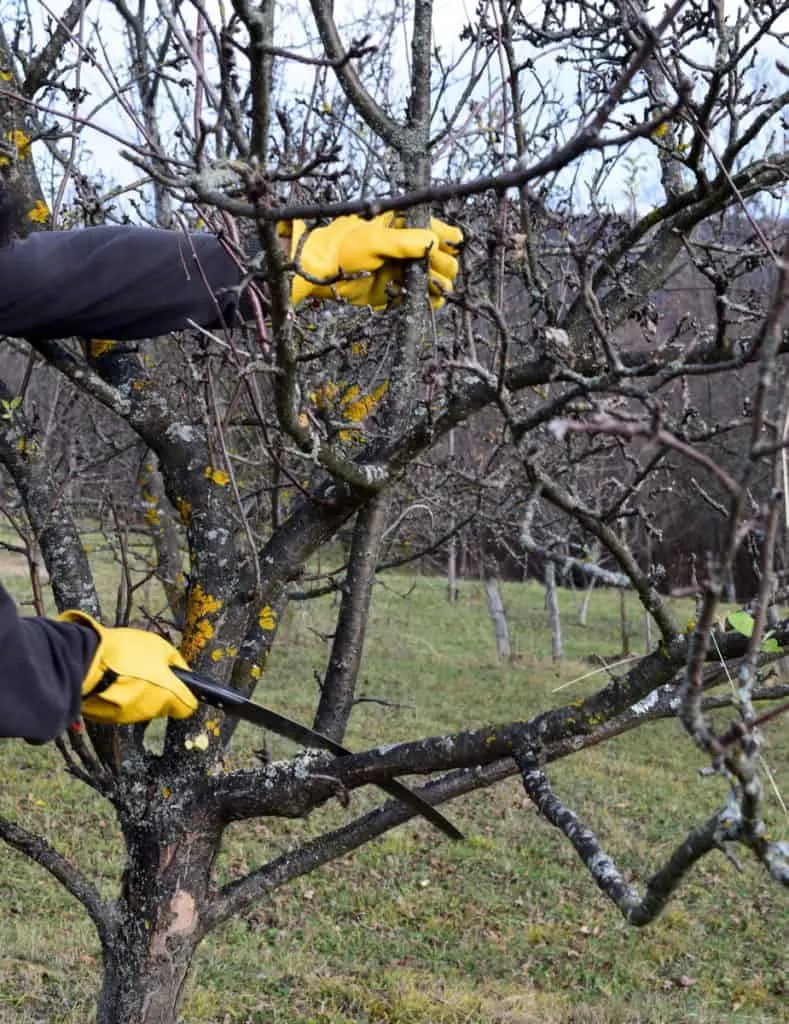
When wind blows through the trees, the branches will rub together, causing stress and a way for bacteria to enter through the wound.
Now is also the time to cut back any larger branches within the crown of the tree that may prevent light and air from entering – keeping good circulation and the overall health of the tree in mind.
Step 3 – Clip back branch tips
Now, that you have removed the main branches, focus on the young shoots that have randomly popped up.
What is small now, will be big later.
Clip them back now, remembering to cut at an angle just in front of the bud, and define the overall structure of the tree.
If you can clip back branches to where the bud is pointing away from the center of the plant, do it now. This will encourage new shoots to grow outwards, rather than inwards, saving you time and frustration in the future.
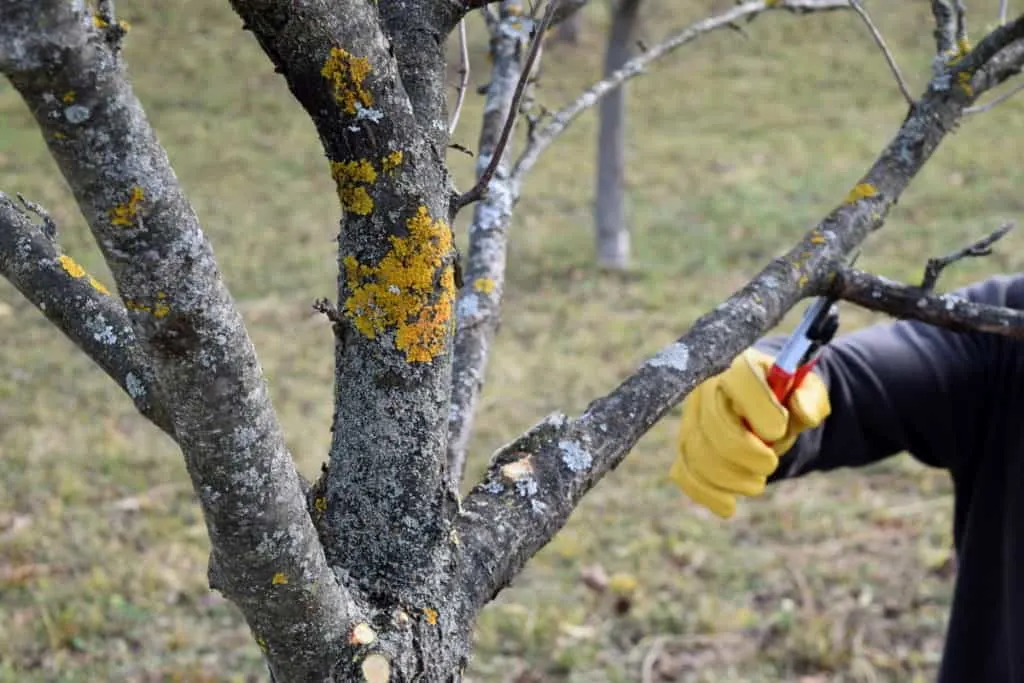
Still in need of pruning inspiration to get you outdoors and in the tree?
Find out about The Wrong Way to Prune a Tree, gather up your courage and your tools, then get outside and get to work!
Tools needed for pruning fruit trees
Other than your own vital energy, you will be needing a few simple tools to prune a small tree:
- pruners – we use these Felco pruners. You can ready why we love these pruners so much here.
- blade pruning saws
- sturdy gardening gloves – here’s my review of five of the most popular pairs on Amazon, including my top pick.
- ladder, if necessary
The more trees you prune, the easier it will get. The faster it will be too.
As you gain confidence, making a decision to cut a branch (without regrets) can be made in a split second. Pretty soon you’ll be pruning 20 or more trees a day! All the while wishing you had even more…
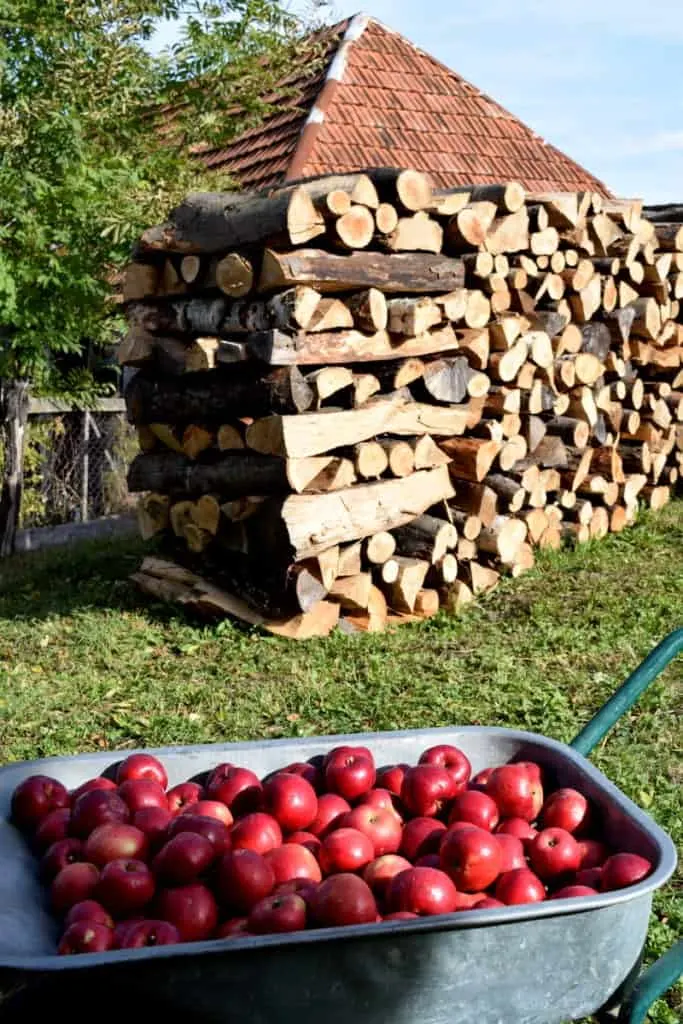
While an apple a day may not be proven to keep the doctor away, fire cider may do just the trick – which is of course, made from apple cider vinegar!
Keep those apple trees pruned, the pears and plums too, for an abundant harvest almost every year (keeping in mind that fruit production is cyclical in nature!).

Get the famous Rural Sprout newsletter delivered to your inbox.
Including Sunday ramblings from our editor, Tracey, as well as “What’s Up Wednesday” our roundup of what’s in season and new article updates and alerts.

